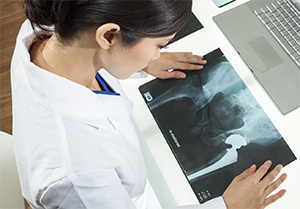
Spotmatik Ltd/shutterstock.com
WASHINGTON, D.C.—What do treating hand osteoarthritis (OA) in the primary care setting, high financial strain and risk of depression in patients with lupus, prolonged sitting and cardiovascular disease, and sex-specific treatment after total hip arthroplasty have in common? They were all topics presented during a session titled ARHP I: Exemplary Abstracts at the 2016 ACR/ARHP Annual Meeting.
Treating Hand OA in Primary Care
Nina Brodin, PT, PhD, a lecturer in the division of physiotherapy in the Department of Neurobiology Care Sciences and Society at the Karolinska Institutet in Stockholm, Sweden, opened the session describing the results of a six-week structured hand OA program delivered in a primary care setting showing that combining education and exercise is a useful intervention in this setting.
The study included 49 patients with symptomatic or radiologically verified hand OA who participated in a six-week program that consisted of two initial educational sessions describing joint health/changes and the importance of exercise followed by six weeks of exercise tailored to individual goals. The exercise component included twice weekly sessions that included an initial 20 minutes of heat therapy followed by 25 minutes of general training. Occupational therapists and physiotherapists trained in the Swedish Better Care for Patients with Osteoarthritis (BOA) concept delivered the program.
The study found that participation in the program led to lower levels of activity limitation, improved grip ability, grip strength, and range of motion of the hand, and that the effect was sustained after one year. These findings, said Dr. Brodin, suggest that patients with hand OA benefit from education and exercise not only directly by improved function and mobility, but also over the long term.
Depression Risk in Lupus Patients: High Financial Strain
Natalie McCormick, PhD candidate, The University of British Columbia, Vancouver, Canada, presented the findings of a longitudinal study that assessed the predictive value of several socioeconomic measures on new-onset depression in a community-based sample of women with systemic lupus erythematosus (SLE). Of the multiple socioeconomic measures assessed, including poverty, education level, household income and financial strain, high financial strain was the only independent predictor of new-onset depression in this cohort of women.
“None of our conventional measures of low socioeconomic status (lower educational attainment, low household income, or living in poverty) were independent predictors of new-onset depression over a one-year period,” said Ms. McCormick. “However, having a high level of current or anticipated financial strain did increase the risk, by nearly two times, even after adjusting for disease activity, baseline depressive symptoms and other disease and socioeconomic factors.”

